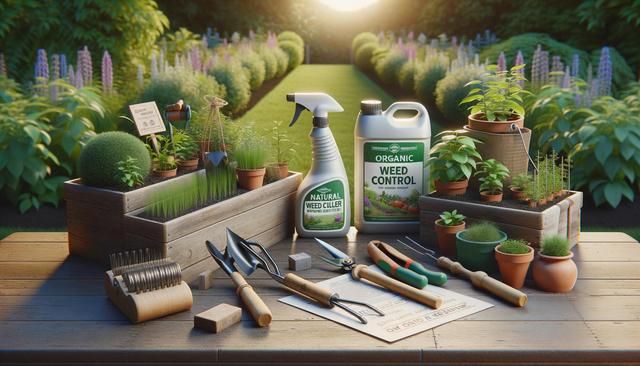Understanding Why Weed Control Matters
Weeds are more than just an eyesore in your garden; they can compete with your plants for sunlight, water, and nutrients. Left unchecked, weeds can quickly overtake beds, pathways, and even lawns, making it harder for your desired plants to thrive. Effective weed control methods not only help maintain the appearance of your outdoor space but also improve plant health and reduce the need for chemical interventions later on.
Some common problems caused by weeds include:
- Choking out vegetables or flowers by crowding their root systems
- Attracting pests or harboring plant diseases
- Creating a messy and unkempt appearance
Tackling weeds early and consistently is key. Fortunately, there are easy and low-maintenance strategies that can significantly reduce the effort needed over time while keeping your garden looking its best.
Mulching: A Natural Weed Barrier
Mulching is one of the most accessible and effective weed control techniques. By applying a layer of organic or inorganic material over the soil, mulch acts as a barrier that prevents weed seeds from receiving the light they need to germinate. In addition to weed suppression, mulch helps retain soil moisture, regulate temperature, and improve soil structure as it breaks down.
Common mulching materials include:
- Bark or wood chips
- Straw or hay
- Compost or shredded leaves
- Landscape fabric covered with gravel or stones
Apply mulch in a layer 2–4 inches thick around plants, ensuring it doesn’t touch the stems directly to avoid rot. Replenish the mulch as needed, especially after heavy rain or decomposition over time. This method is especially useful in flower beds, vegetable gardens, and around trees and shrubs.
Hand Pulling and Hoeing for Small-Scale Control
For smaller gardens or targeted weed removal, manual methods like hand pulling or hoeing are simple and require no chemicals. These techniques work best when the soil is moist, making it easier to pull weeds out by the root. Regular attention to weeding—just a few minutes a week—can prevent major infestations later.
Tips for successful hand weeding:
- Use gloves to protect your hands from thorns or irritant plants
- Pull weeds before they go to seed to avoid spreading
- Use a hoe or weeding tool for deeper-rooted or stubborn weeds
Although manual weeding can be time-consuming, it’s a low-cost and environmentally friendly way to maintain weed-free areas, especially in raised beds or tight garden corners where other tools may not reach effectively.
Using Ground Covers and Dense Planting
An excellent way to prevent weeds naturally is by reducing the space available for them to grow. Ground covers and tight plant spacing can minimize bare soil, which is where most weed seeds germinate. Fast-growing ground cover plants are particularly useful for slopes, borders, and areas where mowing is difficult.
Popular ground covers include:
- Creeping thyme
- Low-growing sedum
- Ajuga (bugleweed)
- Vinca minor (periwinkle)
In vegetable gardens, practicing dense planting methods—like square-foot gardening—can crowd out weeds while maximizing yield. Intercropping with quick-growing plants can also shade the soil, making it harder for weeds to take hold. This method is a passive way to suppress weed growth while enhancing the visual appeal and productivity of your garden space.
Boiling Water and Vinegar: Easy Natural Alternatives
If you’re seeking a chemical-free way to eliminate weeds in cracks or hard-to-reach places, simple household items can be surprisingly effective. Boiling water or vinegar solutions are easy DIY options for spot-treating weeds, especially on driveways, sidewalks, or gravel paths.
How to use these methods:
- Boiling water: Pour directly onto the weed; this works well for annuals and young weeds
- Vinegar: Use white vinegar with at least 5% acetic acid; apply with a spray bottle on a sunny day
Note that these methods are non-selective and can harm nearby plants, so apply carefully. While they may require repeated applications, these solutions are cost-effective and safe for use in areas where children or pets play, provided they are used responsibly.
Conclusion: Keeping Your Garden Weed-Free with Minimal Effort
Weed control doesn’t have to be labor-intensive or reliant on harsh chemicals. By incorporating simple, consistent practices like mulching, hand weeding, dense planting, and natural spot treatments, you can keep your garden looking neat and your plants thriving. Whether you’re maintaining a small flower bed or a larger vegetable plot, these easy weed control methods offer practical and sustainable solutions. With a little effort up front, you can enjoy a healthier, more manageable outdoor space throughout the growing season.







